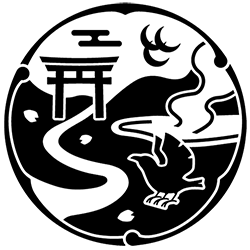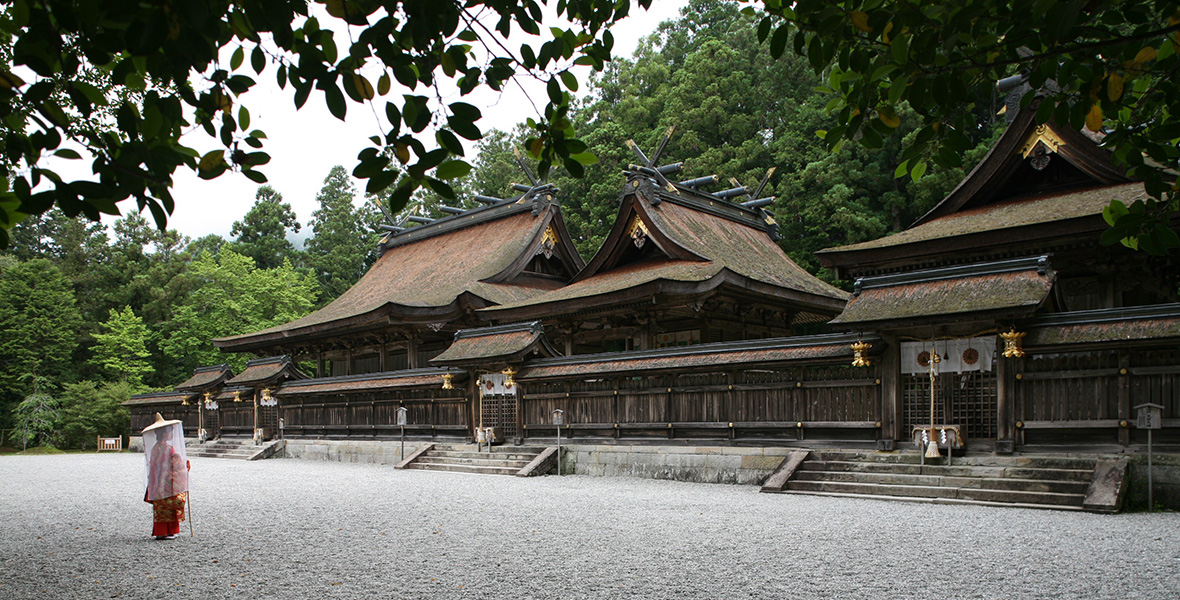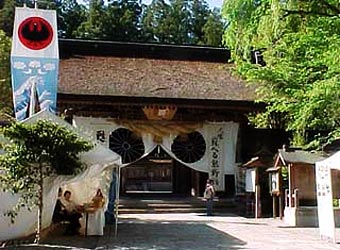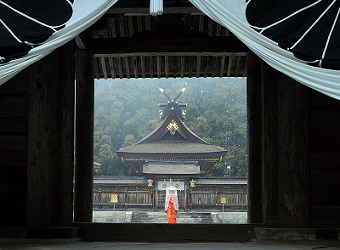Regardless of social rank or wealth, the faithful flock to the Kumano Sanzan on pilgrimage like a train of ants. There were hundred-odd visits from emperors and other nobles visited from the Emperor Uda period.
Kumano Hongu Taisha was named an Important Cultural Property of Japan in 1995.
As you climb the 158 stone steps to the main building, you sense the endless history in the fluttering streamers and towering cedar trees. Once through the main gate, you come upon the main hall with its magnificent thatched roof of cypress shingles. The present structure was relocated here from Ohyunohara after the original structure was destroyed by floods in 1889.
Kumano Hongu Taisha enshrines Izanagi-Okami, the deity who gave birth to Japan, and Ketsumimiko-Okami, a benevolent deity who strives to help mankind. Many people come here to pray for safety on the road, abundant catches (of fish), harmony in the home, happy marriage and long life.
Main gate of Kumano Hongu Taisha
Kumano Sanzan Faith
Kumano Sanzan
- Kumano Hongu Taisha (Hongu)
- Kumano Hayatama Taisha (Shingu)
- Kumano Nachi Taisha (Nachikatsuura)
Kumano is a holy land that has long supported the fervent faith of many. It has figured so importantly over the centuries that people coined the phrase “Seven times to Ise, three times to Kumano”, meaning those who made their pilgrimage to Ise would continue on to Kumano.
Locals began worshipping deities in the area some 2,000 years ago during the reign of the Emperor Sujin.
It is said that the Kumano pilgrimage was an integral part of society between the middle Heian Period and the Kamakura Period. From the visit of the Emperor Uda in 907 until the final visit was made in 1281 by the Emperor Kameyama, a long line of emperors has made it to Kumano including 12 visits by the Emperor Shirakawa, 23 visits by the Emperor Toba, 33 times by the Emperor Goshirakawa and 29 times by the Emperor Gotoba.
In 1619, Yorinobu Tokugawa, Lord of Kishu, put his efforts into restoring the Kumano Sanzan, which once again ignited the pilgrimage to Kumano. Regardless of social status and class, many people headed into the dense forests and steep mountains of Kumano in search of salvation and resurrection.
Text: Tadao Yasui, Owner, Oguriya Guesthouse, Yunomine Onsen




